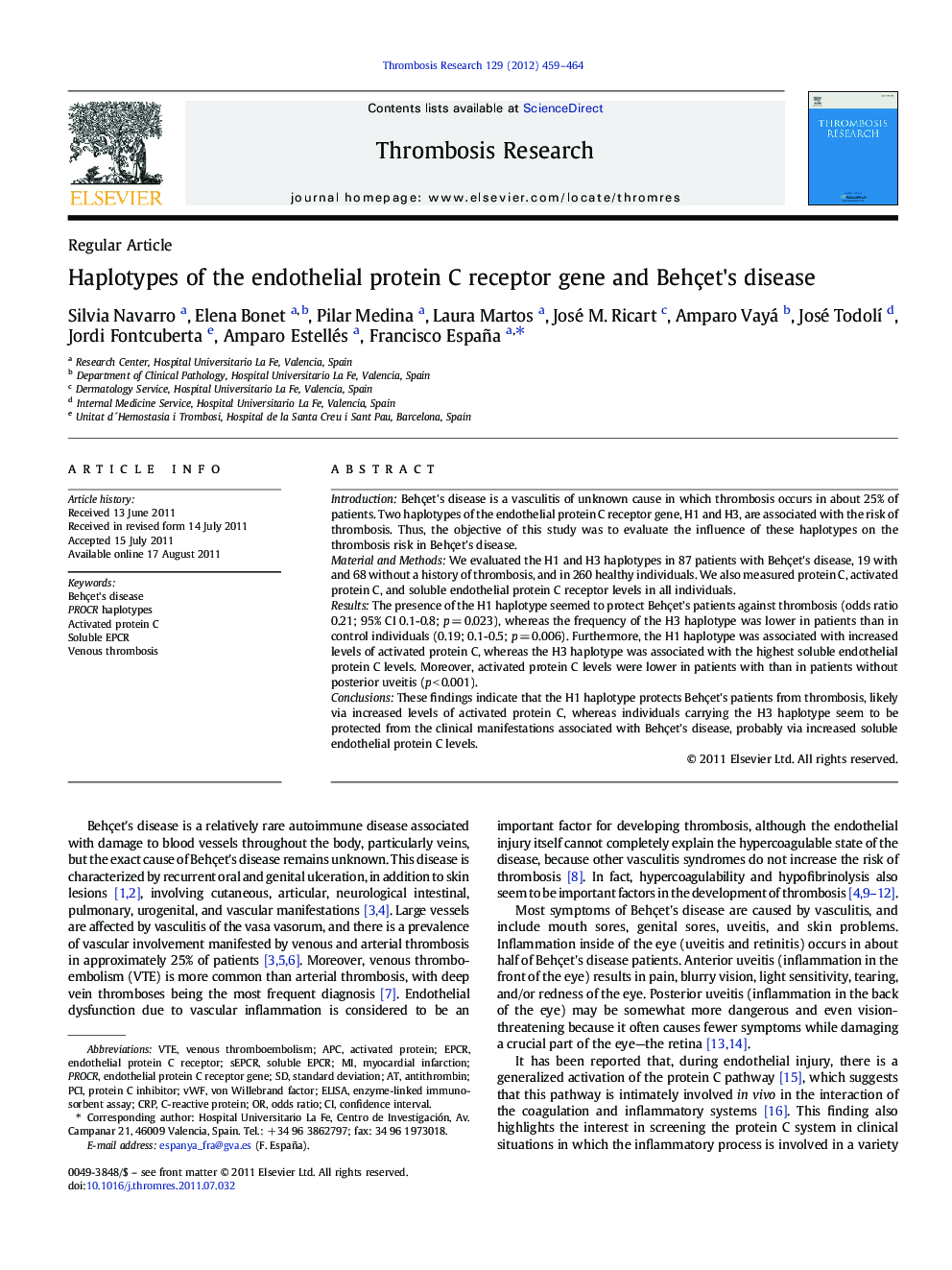| Article ID | Journal | Published Year | Pages | File Type |
|---|---|---|---|---|
| 6003157 | Thrombosis Research | 2012 | 6 Pages |
IntroductionBehçet's disease is a vasculitis of unknown cause in which thrombosis occurs in about 25% of patients. Two haplotypes of the endothelial protein C receptor gene, H1 and H3, are associated with the risk of thrombosis. Thus, the objective of this study was to evaluate the influence of these haplotypes on the thrombosis risk in Behçet's disease.Material and MethodsWe evaluated the H1 and H3 haplotypes in 87 patients with Behçet's disease, 19 with and 68 without a history of thrombosis, and in 260 healthy individuals. We also measured protein C, activated protein C, and soluble endothelial protein C receptor levels in all individuals.ResultsThe presence of the H1 haplotype seemed to protect Behçet's patients against thrombosis (odds ratio 0.21; 95% CI 0.1-0.8; p = 0.023), whereas the frequency of the H3 haplotype was lower in patients than in control individuals (0.19; 0.1-0.5; p = 0.006). Furthermore, the H1 haplotype was associated with increased levels of activated protein C, whereas the H3 haplotype was associated with the highest soluble endothelial protein C levels. Moreover, activated protein C levels were lower in patients with than in patients without posterior uveitis (p < 0.001).ConclusionsThese findings indicate that the H1 haplotype protects Behçet's patients from thrombosis, likely via increased levels of activated protein C, whereas individuals carrying the H3 haplotype seem to be protected from the clinical manifestations associated with Behçet's disease, probably via increased soluble endothelial protein C levels.
